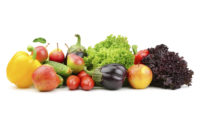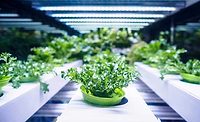Controlled Environment Agriculture Stakeholders Highlight Industry’s Food Safety Needs

Image credit: Ann H via Pexels
An article recently published in the Journal of Food Protection has highlighted the food safety gaps and needs that must be addressed in the controlled environment agriculture (CEA) sector, as identified by academic, industry, and regulatory stakeholders at the Strategizing to Advance Future Extension and Research (S.A.F.E.R.) CEA conference, which was held in April 2023 at Ohio State University’s Ohio CEA Research Center. Themes included supply chain control, foodborne pathogen contamination preventive measures, research, training and education, and collaboration and partnerships.
The stakeholders addressed the need for comprehensive risk assessments tailored to specific crops, cultivars, and CEA systems, as well as several intrinsic and extrinsic factors like pH, nutrients, temperature, humidity, and lighting systems. Also underlined was the need to better understand the diversity of the CEA industry, as well as funding for further research about:
- Seed testing and treatment, including the development and evaluation of seed treatment protocols to reduce pathogenic contamination
- The shelf life and microbial quality of soilless substrates
- Cleaning and sanitation practices for food contact surfaces with minimal disruption to plant growth and crop yield
- Alternative pathogen inactivation methods, such as hot water, steam ultraviolet-C (UV-C), ozone, and radiation
- Soilless substrate supply chain control and hazard mitigation strategies
- Key food safety risk factors in the water and microbial ecosystems
- Education and outreach for educators, the workforce, and regulators
- Workforce development
- Campaigns to bring awareness to CEA among youth, regulators, funding agencies, and academia
- Training for CEA workforce, including developing standard operating procedures (SOPs) for the industry and training programs for extension agents.
The stakeholders also highlighted the importance of collaboration across stakeholder groups to increase CEA food safety.
Looking for a reprint of this article?
From high-res PDFs to custom plaques, order your copy today!










